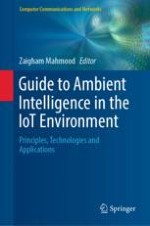2019 | OriginalPaper | Chapter
5. Developing WLAN-Based Intelligent Positioning System for Presence Detection with Limited Sensors
Authors : Ivan Nikitin, Vitaly Romanov, Giancarlo Succi
Published in: Guide to Ambient Intelligence in the IoT Environment
Publisher: Springer International Publishing
Activate our intelligent search to find suitable subject content or patents.
Select sections of text to find matching patents with Artificial Intelligence. powered by
Select sections of text to find additional relevant content using AI-assisted search. powered by
